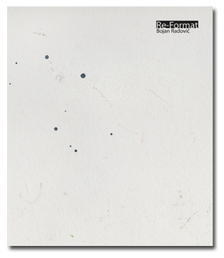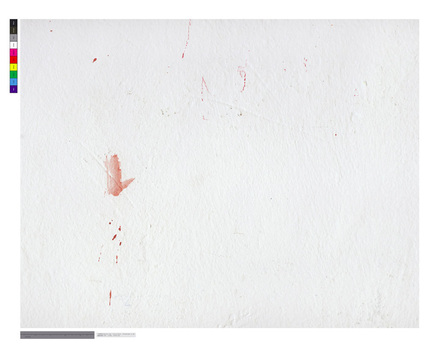|
|
|
On Photography
Questioning photography, its analysis, deconstruction of its components and determinants, the exploration of the basics of the medium – T, f, ∞. What follows is the fundamental question – What is a photograph. But instead of focusing on the meaning, on what, we can turn our attention to topography and ask Where is a photograph. Given the implicit, at least metaphorical time dimension of the where question, we can add: When is a photograph. The first question remains significant at all times, whereas the second and the third open up broad horizons of possible considerations. In his photographic project Re-Format, Bojan Radovič combines these questions and adds a fourth one – How is a photograph. His basic point of departure is a specific space and time. The nucleus of an exhibition project consisting of the author’s personal story connected with a house is the wall as a vehicle of messages, and the many years the artist spent there, his decade-long absence and his recent return to this space. During his absence the house was uninhabited, the interrupted state of human intervention consequently facilitating the unhindered influence of natural phenomena: moisture, temperature variations and, most of all, light as one of the most attractive modifiers of the surface. The wall is a border between inside and outside, it delineates… and carries a record of habitation. At the same time, it is a direct physical topos and sign of the passage of time; it historicises habitation, in return facilitating an analysis of its traces. The artist reproduced the wall with a scanner and with the images created photographic “wallpaper” for the exhibition. There is striking similarity between the final product, created with a digital camera or a scanner, although differences are obvious to the expert eye. While questioning the use of technical tools, the artist critically focuses on the question of what a photograph is. This “photographic copying” of the wall by means of a scanner seems completely genuine to the naked eye. Indeed, the human eye, this unreliable, easily manipulated organ, is tricked if perception remains superficial. Today this is even more the case, because through this sense the most intense political/social/economic/geopolitical reality is constructed. The photo-graphic wallpaper takes on the role of the representation of reality, while at the same time questioning the medium of photography by generating multiple layers and translating the image to similar media. By means of the scan the artist records pure matter. Here we must not ignore his desire to record, to document the existing physical reality from up close, to come as near as possible to it. For those who created them, the traces on the wall are signs with references in their memory. An element of the documentary is present. The sharp haptic quality of the photographic wallpaper deludes the viewer even more. The fascinating, structured surface of the wall offers the aesthetic pleasure of seeing what can be seen in the context of many associations and references to the artistic and conceptual background. The visual effects of the images strongly resemble those of painting, while the “metaphor of the gaze” triggers many interpretations.T – time, f – aperture, ∞ – infinity: these three signs are placed in the centre of photographs or scans of the wall. The image, replica of the wall, placed on the wall along with a framed photograph of the wall, questions reality and the borders of a work of art and of the medium employed. The selected motif of the “empty” frame, of emptiness on the wall, which was created over a longer period of time and was revealed in a moment when an object, probably framed picture, was removed, is an extremely suggestive photograph (the artist’s game with transformations of formats does not allow the replication of the real state of things). Now it seems to have been a temporary decoration, because an empty apartment without people living in it does not need anything on the wall. This is evident from the framed emptiness, which had its value because otherwise the object would remain on the wall even when its inhabitants ceased to exist in its space; it can be defined as temporary decoration for the inhabitants, but not as a wall as such. The three codes are variables; they appear in all three segments of the artist’s display, including photographs of photograms, in interpretation, the infinite possibility and finality of the current exhibition and selection. Petra Kapš |


